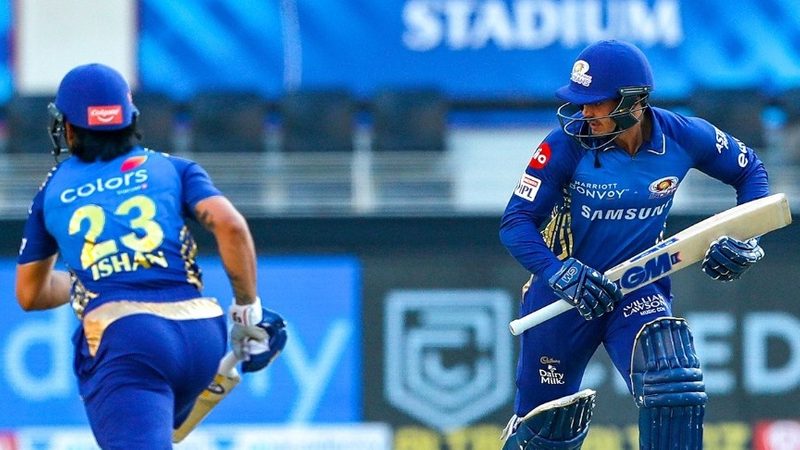
It wasn't even deemed a possibility until Rohit Sharma got injured and Mumbai decided to throw caution to the wind and go against conventions by putting together Quinton de Kock and Ishan Kishan, two left-handers, at the top of the batting order.
They clicked instantly and a 116-run opening stand ensued between the two in a fairly comfortable run-chase against Chennai. In the following game against Rajasthan, Kishan again got going but de Kock was dismissed early. Then, in the clash against Delhi late in the season, Ishan Kishan showed complete disdain against Kagiso Rabada and Anrich Nortje to smash 72 in 47 balls, perhaps his best knock in the season.
The conundrum facing Mumbai now is with Rohit Sharma returning, there's only room for one of de Kock and Kishan at the top and the South African is favoured to take the spot as he has never batted in the middle-order too much while Kishan is a mainstay middle-order batsman.
But this disturbs the method that has worked wonderfully well for Mumbai in the recent past, most notably in that game against Delhi.
So who will open the batting for Mumbai in the playoffs? They will play a minimum of two games in the playoffs anyway, and deciding the perfect two for the top from game one will be pertinent.
Factors to keep in mind
Scoring and surviving in the Powerplay
The template that has worked for most teams is one opener batting deep - when scoring quickly after the Powerplay too - into the innings. With Mumbai, the top-order batsmen who play in the Powerplay have had contrasting fortunes.
- In seven out of 10 innings in the Powerplay this season, Rohit has fallen inside the first six overs while scoring at a strike-rate of 111.38.
- De Kock has been dismissed on seven occasions too but has played 14 innings and scored significantly quicker at 132.80.
- Kishan, like Rohit, is more sedate in the Powerplay, striking at 119.30 but bats deep. He has been dismissed just once in the Powerplay in nine innings inside the first six overs.
How it affects de Kock
Quinton de Kock is Mumbai's highest run-scorer this season with 443 runs and Kishan comes next, with 428. De Kock's run-scoring with different partners has a different template this season.
- When batting with Kishan, de Kock scores at a more sedate pace of 7.62 runs per over.
- With Rohit, though, de Kock is more aggressive and goes at 9.2 runs per over.
Interestingly, the more aggressive bit works better for de Kock as he has been dismissed just thrice batting with Rohit and five times when batting with Kishan.
How it affects balance
If Kishan and de Kock open, it forces Mumbai to push Suryakumar Yadav to No. 4 with Rohit Sharma batting at No. 3. This again delays the entry point of impact players like the Pandya brothers and Pollard, especially as Rohit is someone who likes to settle in and then go big.
This is the template associated with Rohit, but data does not quite back this up as Rohit has a lower dot ball percentage and slightly better strike-rate when playing in the No. 3 role in the league. But his weakness to leg-spin of late exposes him in the middle-order and forces him to be quiet.
Since 2017, Rohit has an average of 17.2 and a strike-rate just above 120 when batting at No. 3 in the Indian T20 League - a far cry from his much better numbers when opening. Kishan is good against spinners and allows Mumbai to not push Krunal over Hardik and Pollard, in turn not delaying the big hitters' time to go berserk.
Verdict: Rohit alongside de Kock with Kishan as a floater works best for Mumbai at this point of time despite the massive success of the Kishan - de Kock pairing.
Feature image courtesy: Twitter.com / Mumbai



















